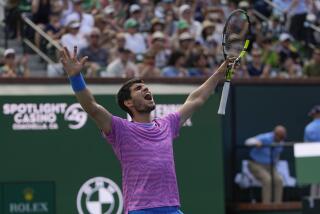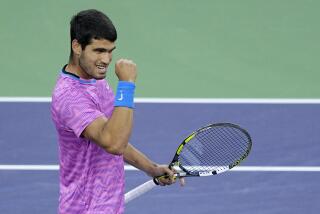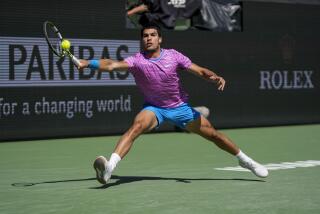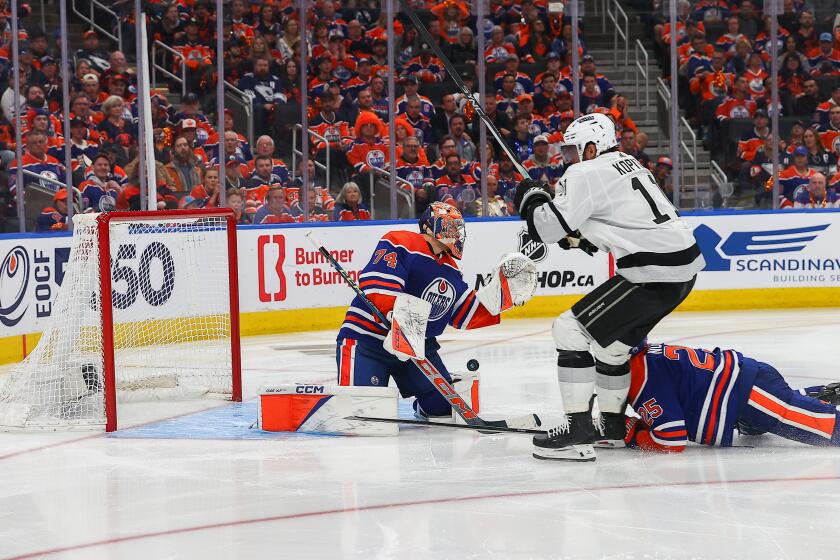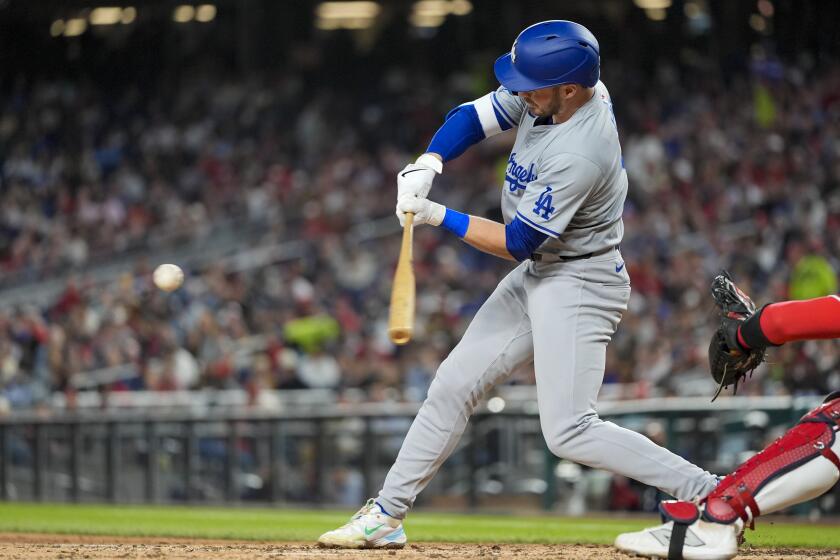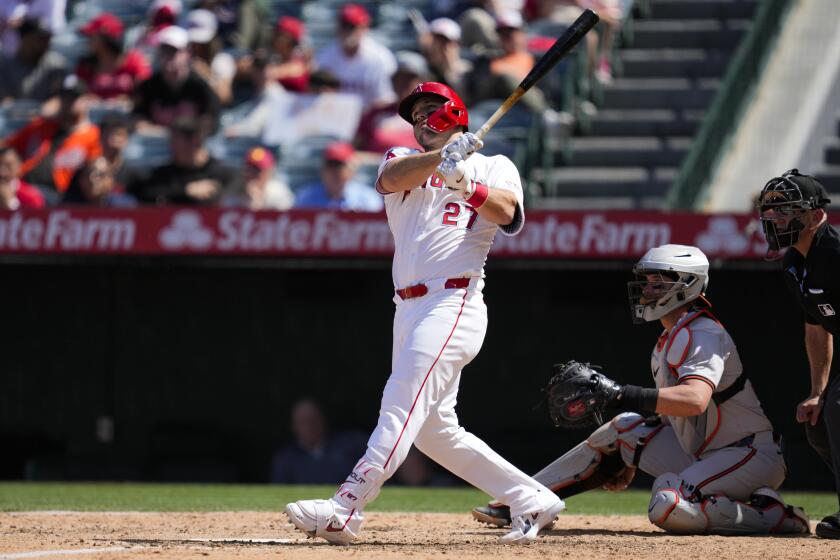Novak Djokovic finds a secret to tennis success and a dent in Rafael Nadal’s armor
The No. 1 men’s tennis player in the world has a weakness, it was learned Sunday at Indian Wells.
Rumors of the actual existence of flesh and blood in the tennis machine known as Rafael Nadal were confirmed in front of a crowd of 16,754, in a stadium that has a listed capacity of 16,100.
That made as much sense as the irrepressible Nadal going out with a whimper, which is what he did at the end of his 4-6, 6-3, 6-2 loss in the final of the BNP Paribas Open.
On this cool, overcast day of tennis magic, the instructor/architect of what took place was a Serb named Novak Djokovic, whose game has recently gone from super to sensational. Djokovic earned this title with the kind of performance that will keep them talking around the Southern California desert for years to come.
It wasn’t just that Djokovic won. Nor that he beat the almost-never-beatable Nadal.
It was that, by beating him as he did, he showed the rest of the tennis world how.
The match, and the show-and-tell, basically came down to the ninth game of the second set. Nadal had been his usual rock-solid self from the start, hitting hard and deep off both sides, his shots heavy and penetrating. That got him the 6-4 first set.
When Djokovic stepped to the service line for Game 9 of the second set, he led, 5-3. He had been broken in his previous service game and had also had his serve broken twice in the first set. So there were no guarantees. Quickly, he got to set point at 40-15, but the battle had just begun.
What a battle it was. The Serb squandered five set points before winning the sixth, and squaring the match. He also kept the game at deuce five times while facing only one break point.
His strategy at deuce was not only effective, but quite revealing. Almost without fail, the right-handed Djokovic spun his serve wide to the corner of the service box right of Nadal, to the left-hander’s backhand. Each time, Nadal either failed to return or did so weakly enough to allow Djokovic to dictate the point.
And when Nadal returned, Djokovic mostly pounded away on the same side, Nadal’s backhand, until he got an error.
There is a science to this, much deeper than the usual rule of thumb in club players’ strategy, which is to hit to the other person’s backhand. On the pro tours, the backhand is often a player’s strongest weapon. Nadal’s is excellent, but it is a two-hander, which shortens his reach to his right. In this sequence, Djokovic’s serves were not big boomers, even his first serves. Most were about 115 mph, kicking high and spinning to Nadal’s right.
Soon, Nadal was not Nadal. The ninth game of the second set had drained him, as well as everybody in the place. Except perhaps Djokovic. He won the first four games of the final set, running his streak to six straight, and said later, “I was on a roll.”
He also said, “In the third set, I was mostly trying to convince myself to take it one point at a time.”
There is really no confirmation of the existence of Djokovic’s tactics, other than observation. If Nadal admitted he had been taken to school on his backhand side, he would see 20,000 more in the next tournament in Miami, and every tournament after that. Other players certainly sense this is one usable tactic, but few have been able to exploit is as Djokovic did Sunday.
Nadal’s admitting it worked would open the floodgates. Djokovic’s admitting it would be giving away a strategy usable for years to come.
Nadal pointed to his serve’s crumbling in the second set as the reason for his loss.
“I think I was too worried about my serve to play my best level from the baseline,” he said. “My serve didn’t work.”
Everything worked for Djokovic, and has been working since he won two matches late last year for Serbia in the Davis Cup. Since then, he has won 18 more matches without a defeat, including the Australian Open title. Sunday, he pocketed $611,000 for winning, and Monday, he officially becomes No. 2 in the rankings, replacing Roger Federer, whom he beat in the semifinals.
“I want to keep on going and keep on playing good tennis,” said Djokovic, who says that he is playing the best tennis of his life.
Hard to argue. If it spoke, Nadal’s backhand could testify to that.
More to Read
Get our high school sports newsletter
Prep Rally is devoted to the SoCal high school sports experience, bringing you scores, stories and a behind-the-scenes look at what makes prep sports so popular.
You may occasionally receive promotional content from the Los Angeles Times.
